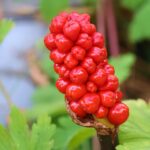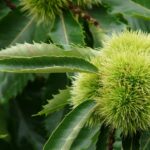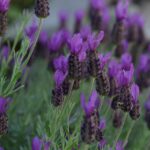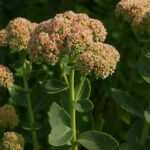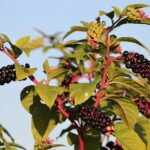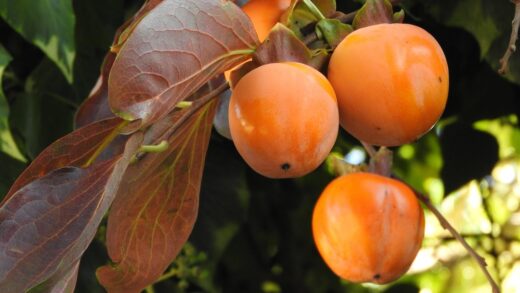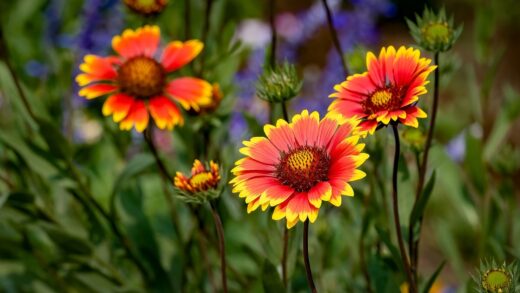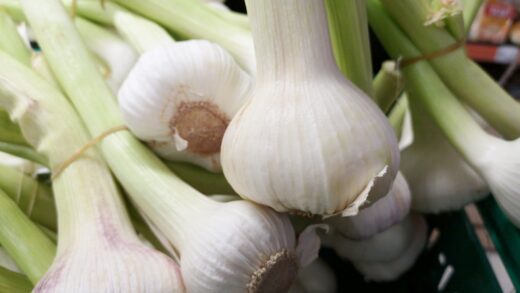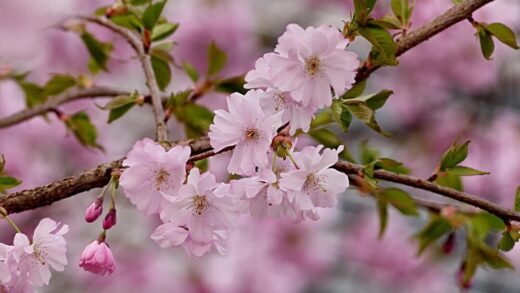The amount and intensity of light that a Darwin’s barberry receives is one of the most significant factors influencing its overall health, growth habit, and, most notably, its flowering profusion. Originating from the forest margins and clearings of South America, this plant has adapted to thrive in a range of light conditions, but it has a clear preference that allows it to perform at its peak. Providing the optimal light exposure is a foundational aspect of its care, directly impacting its energy production through photosynthesis. Understanding its specific needs allows a gardener to select the perfect site, ensuring the shrub has the resources to become a dense, vibrant, and floriferous feature in the landscape.
Ideally, Darwin’s barberry flourishes in a position that receives full sun to partial shade. In a full sun location, which is defined as receiving at least six hours of direct, unfiltered sunlight per day, the plant tends to produce the most abundant and spectacular display of its signature orange-yellow flowers in the spring. The increased light energy fuels more prolific bud formation. Furthermore, the foliage often develops a more compact and dense habit in higher light levels, which is particularly desirable when growing the plant as a formal hedge or a structured specimen.
However, the term “full sun” can be relative and depends heavily on the climate. In cooler, more northern climates, a location in full, all-day sun is generally ideal and will be met with excellent results. In contrast, in regions with very hot and intense summer climates, unrelenting afternoon sun can be detrimental. The intense solar radiation and heat can lead to stress, causing the leaves to scorch, turn brown at the edges, and the plant to require significantly more water to stay hydrated. In these hotter regions, a partial shade location is often the superior choice.
Partial shade, typically defined as an area receiving between three and six hours of direct sun per day, can provide a happy medium. The perfect scenario in a hot climate is a location that receives several hours of gentle morning sun but is shielded from the harsh, scorching sun of the late afternoon. This exposure provides enough light for healthy growth and good flowering while protecting the plant from the most stressful conditions of the day. A location under the high canopy of deciduous trees or on the east-facing side of a building can often provide these ideal conditions.
The impact of full sun exposure
Placing Darwin’s barberry in a full sun location brings several distinct advantages, primarily related to its ornamental qualities. The high level of light intensity directly correlates with the plant’s ability to produce flowers. A shrub situated in a sunny spot will almost invariably have a more dramatic and dense bloom in the spring compared to one grown in shadier conditions. This is because the plant has an abundance of energy to convert into reproductive structures, namely flowers, and subsequently, the attractive blue berries that follow in the autumn.
More articles on this topic
In addition to enhanced flowering, full sun exposure also positively influences the shrub’s overall form and density. With light coming from all directions, the plant tends to grow more evenly and compactly. The internodes—the spaces on the stem between the leaves—are often shorter, resulting in a fuller, less leggy appearance. This makes it an excellent candidate for locations where a dense screen or a tightly formed specimen plant is desired. The evergreen foliage also tends to maintain its rich, deep green color in high light.
Despite these benefits, it is crucial to ensure that other cultural requirements are met, especially in a full sun setting. The soil in sunny, exposed areas tends to dry out much more quickly, so diligent watering is essential, particularly for young plants that are still establishing their root systems. A thick layer of organic mulch becomes even more important in these locations, as it helps to conserve soil moisture, keeps the root zone cool, and prevents the soil from baking and hardening in the sun.
While generally robust, plants under the constant stress of intense sun without adequate moisture can become more susceptible to certain pests, such as spider mites, which thrive in hot, dry conditions. Therefore, choosing a full sun location must be a holistic decision. It is only the best choice if you are in a climate where the summer sun is not excessively harsh or if you are prepared to provide the consistent moisture the plant will need to thrive under those more demanding conditions.
Thriving in partial shade
For many gardeners, particularly those in warmer climates, a partial shade location represents the optimal environment for Darwin’s barberry. This setting provides a perfect balance, offering enough direct light to fuel healthy growth and flowering while providing a crucial respite from the most intense heat of the day. A site that captures the bright but less intense morning sun and then falls into dappled or open shade in the afternoon is considered the gold standard for this shrub in many regions.
More articles on this topic
In partial shade, the plant is less likely to suffer from the common problems associated with heat stress, such as leaf scorch. The foliage will remain lush and healthy, and the plant’s overall water requirements will be lower than if it were in full sun. This can make the shrub a more sustainable and lower-maintenance choice for a water-wise garden. The slightly more sheltered conditions can also protect the plant from drying winter winds, reducing the risk of winter burn on the evergreen leaves.
While flowering may be slightly less profuse in partial shade compared to a full sun position, a healthy plant will still produce a beautiful and significant display. The difference is often marginal and, for many, the trade-off for a healthier, less-stressed plant with more attractive foliage is well worth it. The plant’s form may also be slightly more open and graceful in partial shade as it reaches for the light, a characteristic that can be very attractive in a more naturalistic or woodland garden setting.
When selecting a partial shade location, consider the nature of the shade. Dappled shade under the high canopy of a large tree is excellent, as the light is filtered and moves throughout the day. Shade cast by a building or wall is more consistent, so an east-facing location (morning sun, afternoon shade) is generally preferable to a west-facing one (morning shade, intense afternoon sun). A north-facing site will likely be too shady, resulting in sparse growth and very poor flowering.
The consequences of deep shade
While Darwin’s barberry can tolerate a degree of shade, it will not perform well in a deep or full-shade location. Deep shade, such as that found under a dense canopy of evergreen trees or on the north side of a tall building, does not provide enough light energy for the plant to thrive. Photosynthesis is severely limited in these conditions, and the plant will struggle to produce enough food to support vigorous growth, let alone flowering.
A barberry planted in deep shade will typically exhibit a number of tell-tale signs of light deprivation. The growth will become very sparse, leggy, and open as the stems stretch out in a desperate search for more light, a phenomenon known as etiolation. The leaves may be larger than normal but will often be a paler shade of green. The overall appearance will be weak and spindly, a shadow of the dense, robust shrub it is meant to be.
Flowering will be severely impacted in a deeply shaded spot. The plant will likely produce very few flowers, if any at all. Since flower production is an energy-intensive process, a light-starved plant will conserve its limited resources for basic survival and vegetative growth rather than reproduction. Consequently, there will be no resulting display of the ornamental blue berries in the autumn, removing one of the plant’s key seasons of interest.
Furthermore, plants grown in deep shade are often more susceptible to fungal diseases. The lack of direct sunlight and reduced air circulation in these locations means that the foliage stays damp for longer after rain or dew. This prolonged wetness creates the ideal environment for pathogens like powdery mildew and fungal leaf spot to flourish. In summary, while the plant may survive for a time in deep shade, it will not thrive, and it is certainly not a recommended location if you wish to enjoy any of the ornamental qualities for which Darwin’s barberry is prized.
Adapting to different light exposures
Darwin’s barberry demonstrates a commendable ability to adapt, but a sudden and dramatic change in light conditions can cause stress. For example, if you are moving a plant that has been grown in a shady nursery environment into a bright, full-sun position in your garden, it is wise to acclimate it gradually if possible. This process, known as hardening off, allows the plant’s leaves to adjust to the higher light intensity and reduces the risk of sunburn and transplant shock.
If you have an existing barberry in a location that has become shadier over time, perhaps due to the growth of nearby trees, you may notice a gradual decline in its performance. The flowering may become less prolific, and the growth may become more open. In this situation, you have two options: improve the light conditions or move the plant. Improving the light could involve selectively pruning the branches of the overhead trees to allow more dappled sunlight to penetrate the canopy.
If improving the light is not feasible, transplanting the shrub to a sunnier location may be the best course of action. The best time to move an established shrub is during its dormant season in the autumn or early spring. You will need to dig a wide root ball to preserve as much of the root system as possible and prepare the new site thoroughly. While transplanting is a stressful event for the plant, moving it to a more suitable light exposure will result in a much healthier and more beautiful shrub in the long run.
Ultimately, the key to success is observation. Pay attention to how your plant is performing in its current location. Does it look dense and healthy? Does it flower well in the spring? Are the leaves a deep, rich green? Your plant’s appearance and behavior are the best indicators of whether its light requirements are being met. By responding to these cues, you can ensure your Darwin’s barberry is situated in the perfect spot to showcase its exceptional year-round beauty.
📷 Michael Wolf, CC BY-SA 3.0, via Wikimedia Commons







